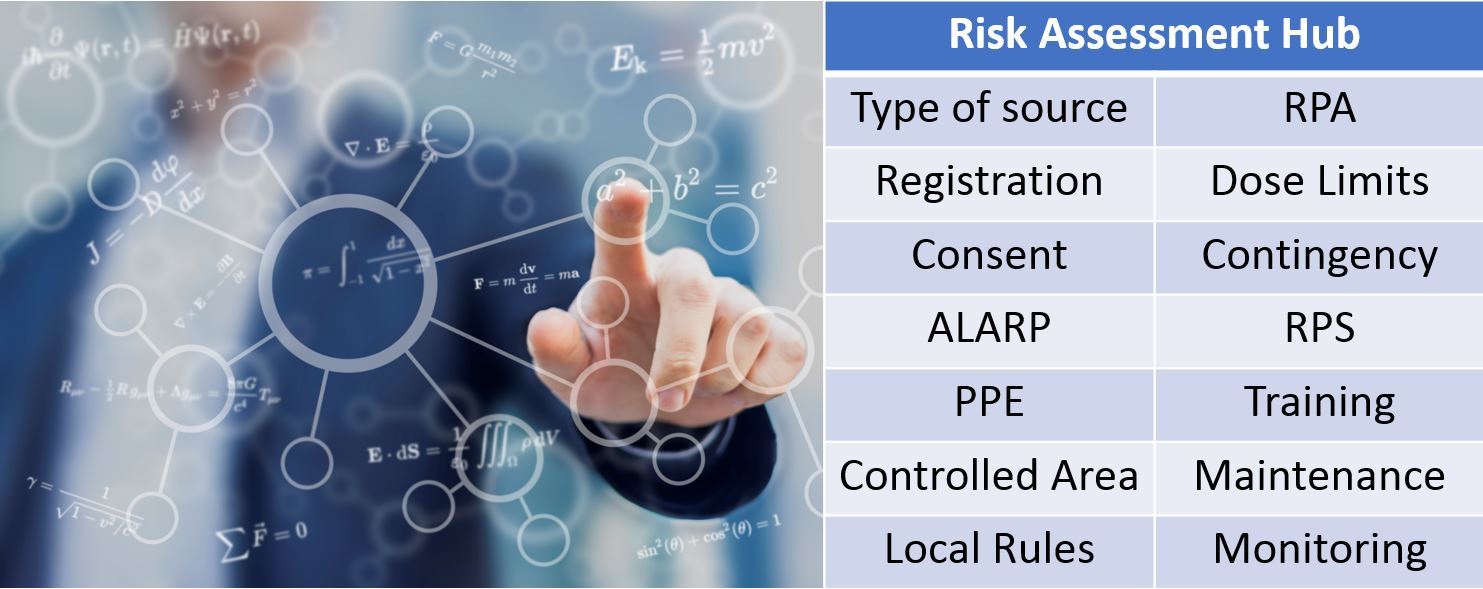IRR17 (14) - Radiation Protection Adviser (RPA)
Published: Sep 29, 2021
Every employer carrying out work with ionising radiation, (i.e. work which does not meet the criteria in Schedule 1 of IRR17), must consult with a suitable Radiation Protection Advisers (RPA) as is necessary to secure compliance. This requirement extends to all areas of IRR17. Generally, if you have to register (IRR17 – Regulation 6), or gain consent (IRR17 – Regulation 7), then you will need to consult with a RPA and appoint in writing. This requirement in practice would also extend to notification (IRR17 – Regulation 5) and interpreting the use of Schedule 1.
If you need an Radiation Protection Adviser service right now, then jump straight to the Ionactive RPA Services page.
Mandatory consultation is required with regards to the following matters (specified in IRR17 – Schedule 4).
Schedule 4 Matters in respect of which a radiation protection adviser must be consulted
(1) The implementation of requirements for controlled and supervised areas.
(2) The prior examination of plans for installations and the acceptance into service of new or modified sources of ionising radiation in relation to any engineering controls, design features, safety features and warning devices provided to restrict exposure to ionising radiation.
(3) The regular calibration of equipment provided for monitoring levels of ionising radiation and the regular checking that such equipment is serviceable and correctly used.
(4) The periodic examination and testing of engineering controls, design features, safety features and warning devices and regular checking of systems of work provided to restrict exposure to ionising radiation.
In addition to the items noted above the following are also examples of matters for RPA consultation.
(a) the radiation risk assessment required by regulation 8
(b) the designation of controlled and supervised areas as required by regulation 17
(c) the handling of the various investigations required by the regulations
(d) the drawing up of contingency plans required by regulation 13
(e) the dose assessment and recording required by regulation 22
(f) the quality assurance programme in respect of medical equipment or apparatus required by regulation 33
(g) the practical implementation of radiation protection and ALARP.
Seeking RPA advice (the importance of risk assessment)
In our view, the single biggest weakness in radiation protection is the risk assessment (IRR17 - Regulation 8). In almost all cases the traditional maxtrix approach to risk assessment will not be adequate when evaluating radiation safety. The risk assessment is the hub to which everything else you do originates from - seeking RPA advice when producing a risk assessment is highly recommended. In fact, this is made clear in the ACoP to IRR17 as already stated in our Regulation 8 resource, paragraph 72 states "When conducting a radiation risk assessment, employers must consult a radiation protection adviser (RPA) about the matters to be considered"

What advice should I expect from my Radiation Protection Adviser (RPA)
In addition to all the matters so far mentioned, an employer should expect to ask the RPA for advice regarding one or more of the following:
(a) using ALARP and defining appropriate dose constraints
(b) installation of new sources of radiation, or modification of existing sources (including engineering features and controls, safety systems, design etc)
(c) choosing to define controlled and supervised areas
(d) classification of workers
(e) defining outside workers and considering their training needs
(f) the use of PPE (including selection, training and maintenance)
(g) workplace monitoring and personnel monitoring programmes
(h) selection of radiation monitoring instrumentation (if need) and subsequence training and annual testing
(i) quality assurance of the radiation safety system, monitors, records and similar
(j) contingency arrangements for prevention of accidents and incidents
(k) training and refresher courses for those working with ionising radiation, awareness training for others
(l) investigation of accidents and incidents and appropriate remedial actions
(m) suitable arrangements for pregnant and breastfeeding employees
(n) preparation of documentation such as risk assessments, local rules and contingency arrangements.
